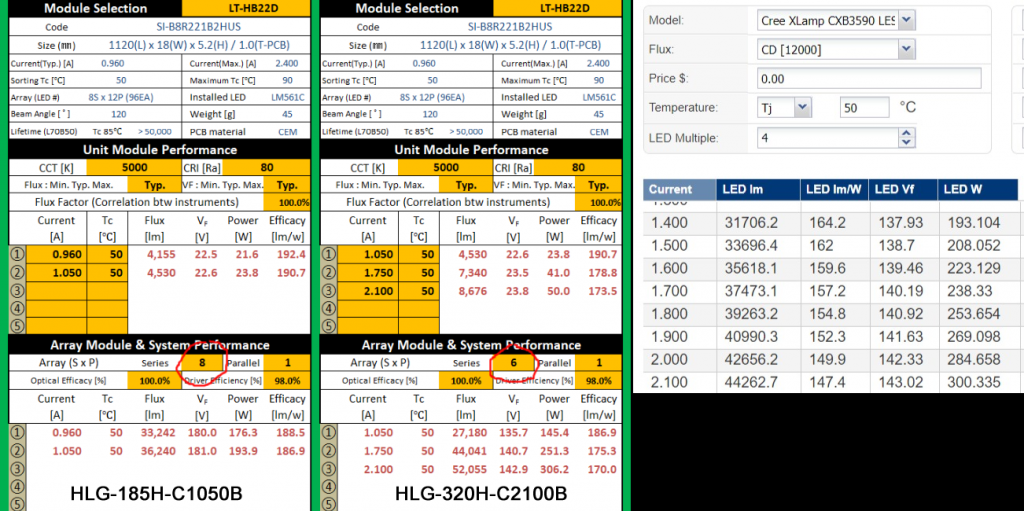Rider509
Well-Known Member
Rider's first foray into LED strip lighting - Samsung H Series GEN3
I became interested in the LED strip cobs as a replacement for the 8' T12 fluorescents in my tattoo shop, but the more I looked into them I wondered if they could be used for growing. I ordered eight of the 4' 5000k 80 CRI lights and a Meanwell driver to experiment with. If it works I have an alternative to my Cree 3590 system. If it doesn't pan out the shop has new lights so I really can't go wrong.
8 x SI-B8R221B2HUS
1 x Meanwell HLG185H-C1050B
Using 22.5Vf the system will have a total forward voltage of 180V. That should be a good match to the Meanwell driver and return an efficacy of 192 lm/W for a total of 33,248 lumens if my math is right. (Cap't Morgan may have been involved) That's similar to a four cob CXB3590 36V system running at 1.5A, but the cost is less at the same level of light. Once I get everything in and assembled I'll run my PAR meter under it and report back.
The proof is in the PAR, but on paper the Samsung is looking pretty good. I ordered the HLG-185H-C1050B for this project but I have spare HLG-320H-C2100B drivers to play with. Using six of the Samsung LED strips in a package no bigger than my existing Cree 3590 system, and using the identical Meanwell driver, it looks like the Samsung will edge out the Cree system with room to spare. Am I missing something here?

In my mind the benefit of the Samsung strip COBs is a more uniform distribution of light without the hotspots that the Cree four COB setup exhibits. Lower initial cost is a plus, as is the lower cost of operation at the same output due to the efficacy of the Samsung system.
On the down side, the Samsungs will never look as cool as the Crees with their pinned heatsinks.

I became interested in the LED strip cobs as a replacement for the 8' T12 fluorescents in my tattoo shop, but the more I looked into them I wondered if they could be used for growing. I ordered eight of the 4' 5000k 80 CRI lights and a Meanwell driver to experiment with. If it works I have an alternative to my Cree 3590 system. If it doesn't pan out the shop has new lights so I really can't go wrong.
8 x SI-B8R221B2HUS
1 x Meanwell HLG185H-C1050B
Using 22.5Vf the system will have a total forward voltage of 180V. That should be a good match to the Meanwell driver and return an efficacy of 192 lm/W for a total of 33,248 lumens if my math is right. (Cap't Morgan may have been involved) That's similar to a four cob CXB3590 36V system running at 1.5A, but the cost is less at the same level of light. Once I get everything in and assembled I'll run my PAR meter under it and report back.
The proof is in the PAR, but on paper the Samsung is looking pretty good. I ordered the HLG-185H-C1050B for this project but I have spare HLG-320H-C2100B drivers to play with. Using six of the Samsung LED strips in a package no bigger than my existing Cree 3590 system, and using the identical Meanwell driver, it looks like the Samsung will edge out the Cree system with room to spare. Am I missing something here?

In my mind the benefit of the Samsung strip COBs is a more uniform distribution of light without the hotspots that the Cree four COB setup exhibits. Lower initial cost is a plus, as is the lower cost of operation at the same output due to the efficacy of the Samsung system.
On the down side, the Samsungs will never look as cool as the Crees with their pinned heatsinks.






